- About MAA
- Membership
- MAA Publications
- Periodicals
- Blogs
- MAA Book Series
- MAA Press (an imprint of the AMS)
- MAA Notes
- MAA Reviews
- Mathematical Communication
- Information for Libraries
- Author Resources
- Advertise with MAA
- Meetings
- Competitions
- Programs
- Communities
- MAA Sections
- SIGMAA
- MAA Connect
- Students
- MAA Awards
- Awards Booklets
- Writing Awards
- Teaching Awards
- Service Awards
- Research Awards
- Lecture Awards
- Putnam Competition Individual and Team Winners
- D. E. Shaw Group AMC 8 Awards & Certificates
- Maryam Mirzakhani AMC 10 A Awards & Certificates
- Two Sigma AMC 10 B Awards & Certificates
- Jane Street AMC 12 A Awards & Certificates
- Akamai AMC 12 B Awards & Certificates
- High School Teachers
- News
You are here
Who's That Mathematician? Paul R. Halmos Collection - Page 26
For more information about Paul R. Halmos (1916-2006) and about the Paul R. Halmos Photograph Collection, please see the introduction to this article on page 1. A new page featuring six photographs will be posted at the start of each week during 2012.
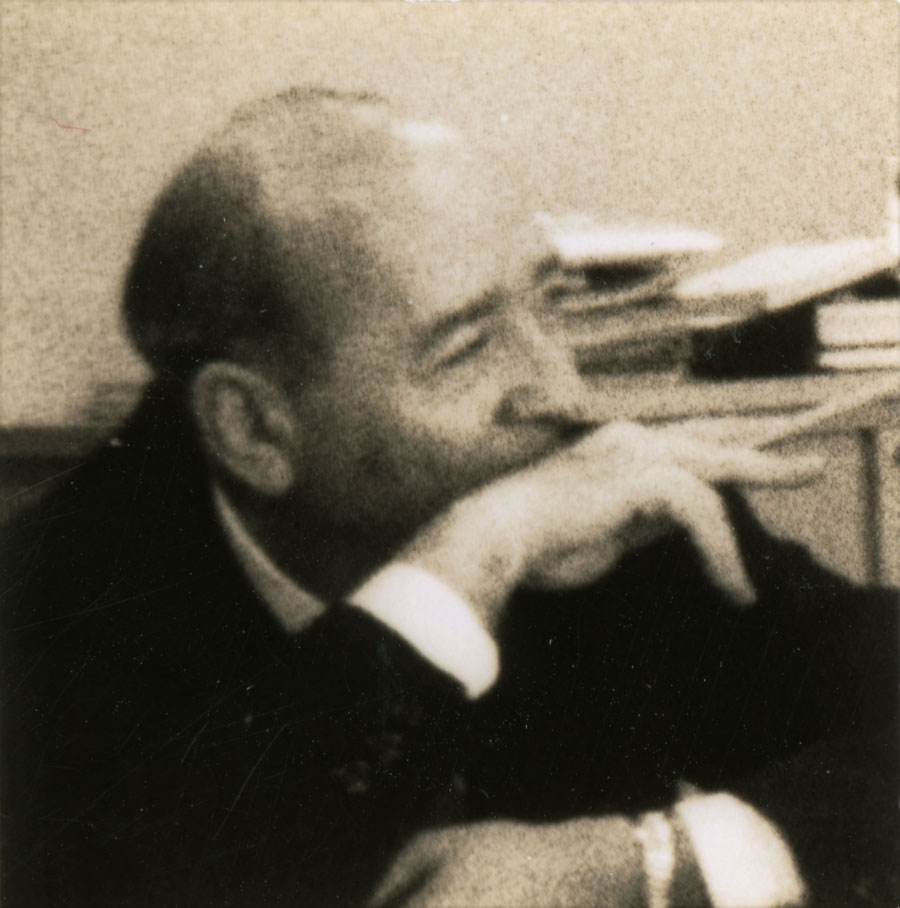
Halmos photographed probabilist Mark Kac (1914-1984) in 1962. According to J. J. O’Connor and E. F. Robertson of the MacTutor Archive, “Mark Kac pioneered the modern development of mathematical probability, in particular its applications to statistical physics.” Kac earned his Ph.D. at the University of Lwów (Lvov) in Poland in 1937 under the direction of Hugo Steinhaus. He managed to escape Poland in 1938, when he took up a scholarship at Johns Hopkins University in Baltimore. He was on the mathematics faculty at Cornell University in Ithaca, New York, from 1939 to 1961, Rockefeller University in New York City from 1961 to 1981, and the University of Southern California in Los Angeles from 1981 onward. (Source: MacTutor Archive)
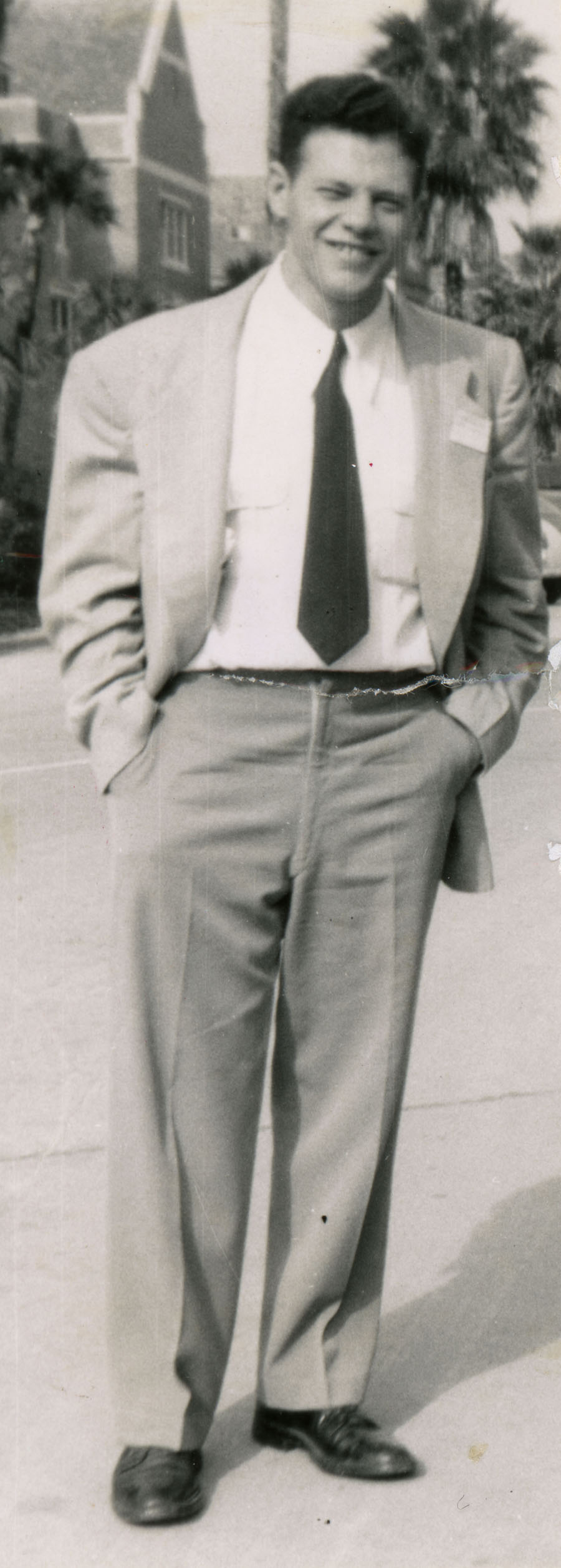
Richard Kadison (1925-2018) was photographed by Halmos in December of 1950 during the AMS Winter Meeting at the University of Florida in Gainesville, to which he carpooled from the Institute for Advanced Study in Princeton with Shizuo Kakutani, Irving Segal, and Alan Hoffman. He remembers well that Halmos was also at the meeting:
Paul was sitting next to me as I waited for my turn to speak [during a session of 10-minute talks]. When I was about to leave my seat to give my talk, Paul tugged at my sleeve and said, out of the side of his mouth in a low voice, with just the hint of a growl, "Don't give an uninvited address." That put me in a wonderfully humorous mood for my lecture!
Kadison wasn't the only one who drove from New Jersey to Florida for the meeting; apparently, IAS permanent faculty member John von Neumann did, too:
A little later at that conference, Dec. 28, von Neumann's birthday, arrived. I knew von Neumann from my stay at the Institute, but only in a formal way. Paul and Shizuo were dear friends of his. At their suggestion I was invited along to his "birthday party." The four of us drove in von Neumann's large Cadillac to a nearby county that wasn't "dry" for a small celebration; it was the thrill of a lifetime for me.
Kadison earned his Ph.D. from the University of Chicago (where Halmos was on the faculty) in 1950 with the dissertation “A Representation Theory for Commutative Topological Algebra,” written under advisor Marshall Stone (pictured on page 4 of this collection), and visited IAS during 1950-52. After teaching at Columbia University from 1952 to 1964, he became Kuemmerle Professor of Mathematics at the University of Pennsylvania. According to the citation for his 1999 AMS Steele Prize for Lifetime Achievement, “For almost half a century, Dick Kadison has been one of the world leaders in the subject of operator algebras, and the tremendous flourishing of this subject in the last thirty years is largely due to his efforts.” (Sources: IAS; UPenn Mathematics; “1999 Steele Prizes,” AMS Notices 46:4 (April 1999), 461-462)
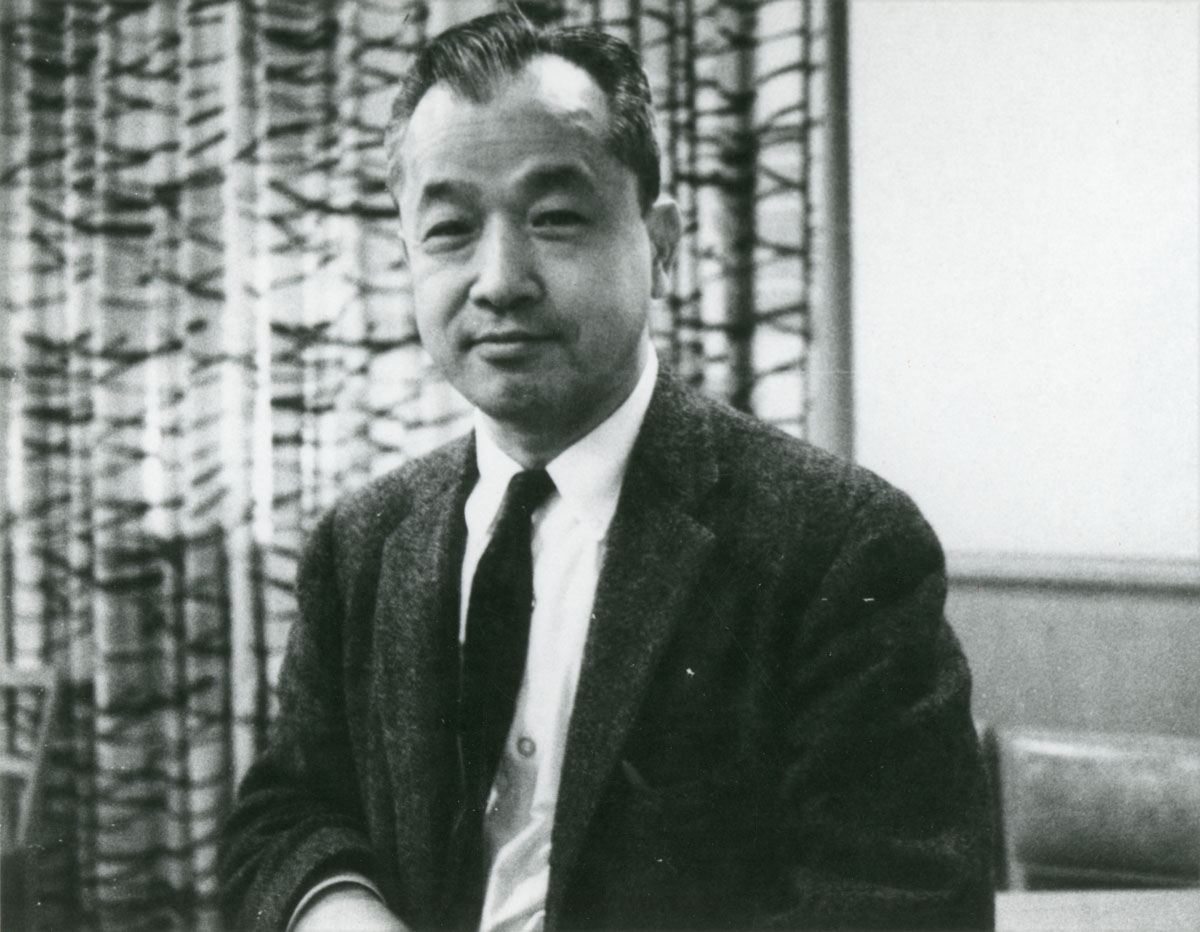
Halmos photographed functional analyst and ergodic theorist Shizuo Kakutani (1911-2004) in 1965. Kakutani earned his Ph.D. in 1941 from the University of Osaka, Japan, where he had taught since 1934. At the invitation of Hermann Weyl, he spent the two years 1940-42 at the Institute for Advanced Study (IAS) in Princeton, New Jersey, where he met Halmos (page 1 of this collection), Warren Ambrose (page 1), Joseph Doob (pages 1, 2, 12, 14), Paul Erdös (pages 3, 14), and John von Neumann. Despite Japan and the U.S. being at war beginning Dec. 7, 1941, Kakutani was able to complete his two-year visit to IAS and return to Japan in 1942. He was on the mathematics faculty at the University of Osaka from 1942 to 1948, at IAS during 1948-49, and at Yale University, where he advised at least 32 Ph.D. students, from 1949 onward. (Sources: MacTutor Archive, Mathematics Genealogy Project)
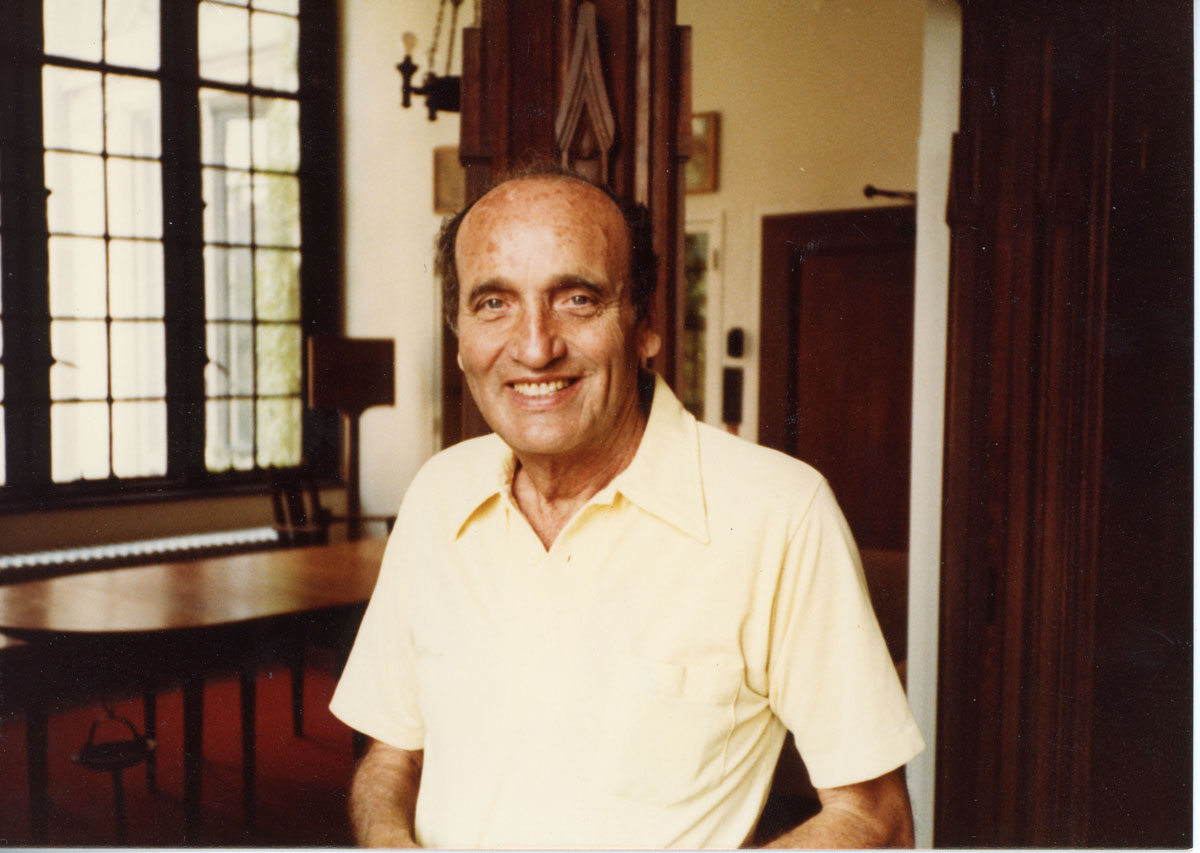
Algebraist Irving Kaplansky (1917-2006) was photographed by Halmos in July of 1983, probably at the University of Chicago, where Kaplansky was professor of mathematics from 1945 to 1984. Halmos was also a faculty member at Chicago from 1946 to 1961. Kaplansky, who advised at least 55 Ph.D. students at Chicago, earned his own Ph.D. from Harvard University in 1941 with the dissertation “Maximal Fields with Valuations,” written under advisor Saunders Mac Lane. He remained at Harvard until 1944, then spent a year at Columbia doing war work before joining the Chicago faculty in 1945. In 1984, he became director of the Mathematical Sciences Research Institute (MSRI), which at that time was housed at the University of California, Berkeley. According to O’Connor and Robertson of the MacTutor Archive, “Kaplansky has made major contributions to ring theory, group theory and field theory.” He was president of the American Mathematical Society during 1985 and 1986. (Sources: MacTutor Archive, AMS Presidents)
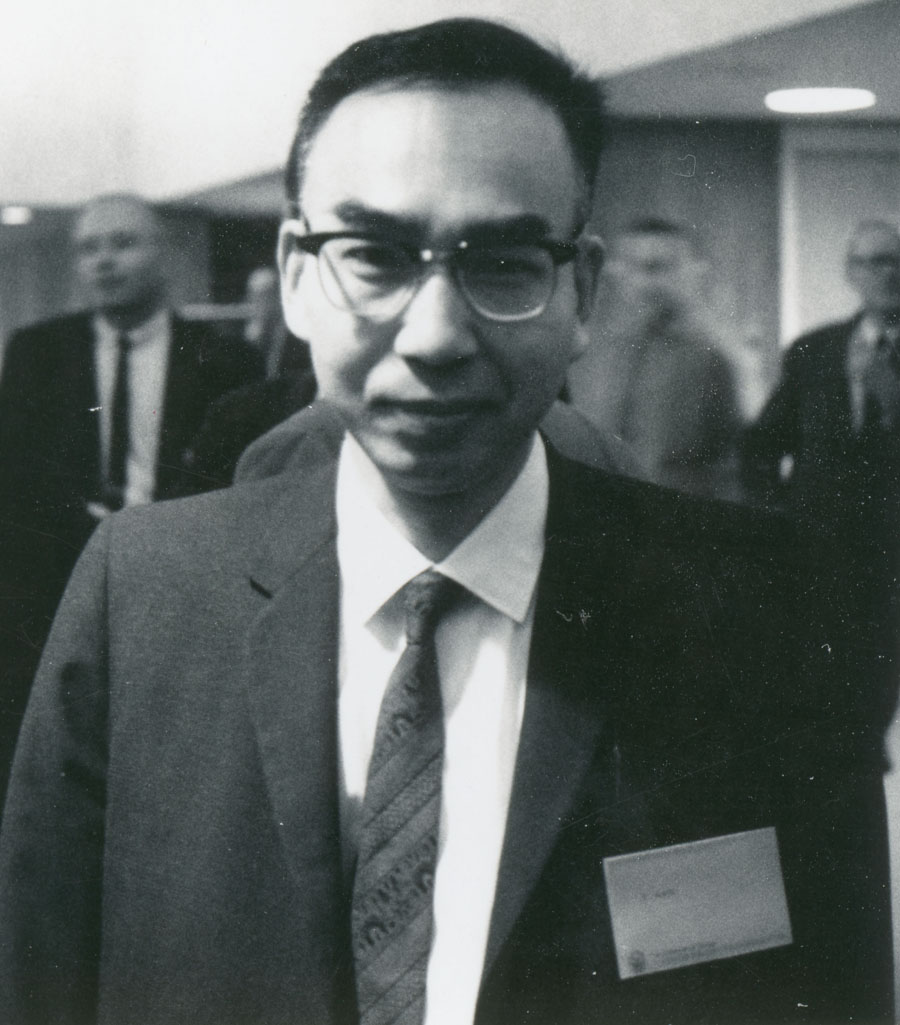
Halmos photographed mathematical physicist and operator theorist Tosio Kato (1917-1999) in Chicago on May 20, 1968. Kato earned his D.Sci. in physics in 1951 from the University of Tokyo with the dissertation “On the convergence of the perturbation method” on partial differential equations. He was a physics faculty member at the University of Tokyo from 1951 to 1962. In 1962, he moved to the University of California, Berkeley, Mathematics Department, where he spent the rest of his career, advising at least 21 Ph.D. students and publishing his well known Perturbation theory for linear operators in 1966. (Source: MacTutor Archive)
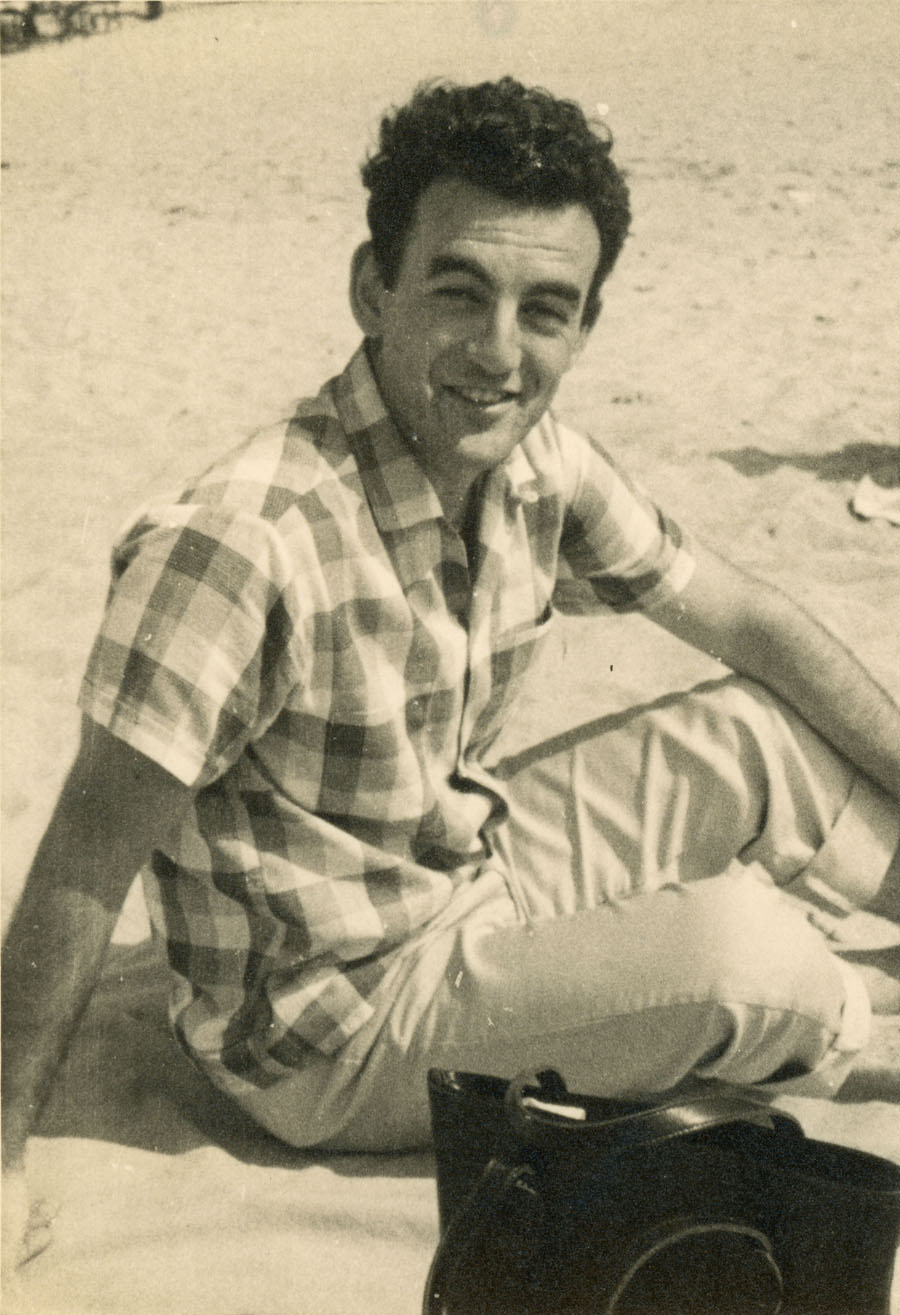
Halmos photographed Yitzhak Katznelson in August of 1960 at a location he identified only as “Dunes” on the back of the photo. Halmos was still at the University of Chicago at the time, and “Dunes” in 1960s Chicago probably referred to the Indiana Dunes State Park on Lake Michigan. Born in Jerusalem, Katznelson earned his Ph.D. from the University of Paris in 1959 under advisor Szolem Mandelbrojt. After teaching at UC Berkeley, Hebrew University (in Jerusalem), Yale, and Stanford, he joined the mathematics faculty of Hebrew University in 1966. In 1988, he moved to Stanford University, where he is now professor emeritus of mathematics and lists his research interests as harmonic analysis and ergodic theory. He is the author of the AMS Steele Prize-winning book An Introduction to Harmonic Analysis. (Sources: Mathematics Genealogy Project; Stanford Mathematics; “2002 Steele Prizes,” AMS Notices 49:4 (April 2002), 466-467)
For an introduction to this article and to the Paul R. Halmos Photograph Collection, please see page 1. Watch for a new page featuring six new photographs each week during 2012.
Regarding sources for this page: Information for which a source is not given either appeared on the reverse side of the photograph or was obtained from various sources during 2011-12 by archivist Carol Mead of the Archives of American Mathematics, Dolph Briscoe Center for American History, University of Texas, Austin.
Janet Beery (University of Redlands) and Carol Mead (Archives of American Mathematics, University of Texas, Austin), "Who's That Mathematician? Paul R. Halmos Collection - Page 26," Convergence (January 2012), DOI:10.4169/loci003801




